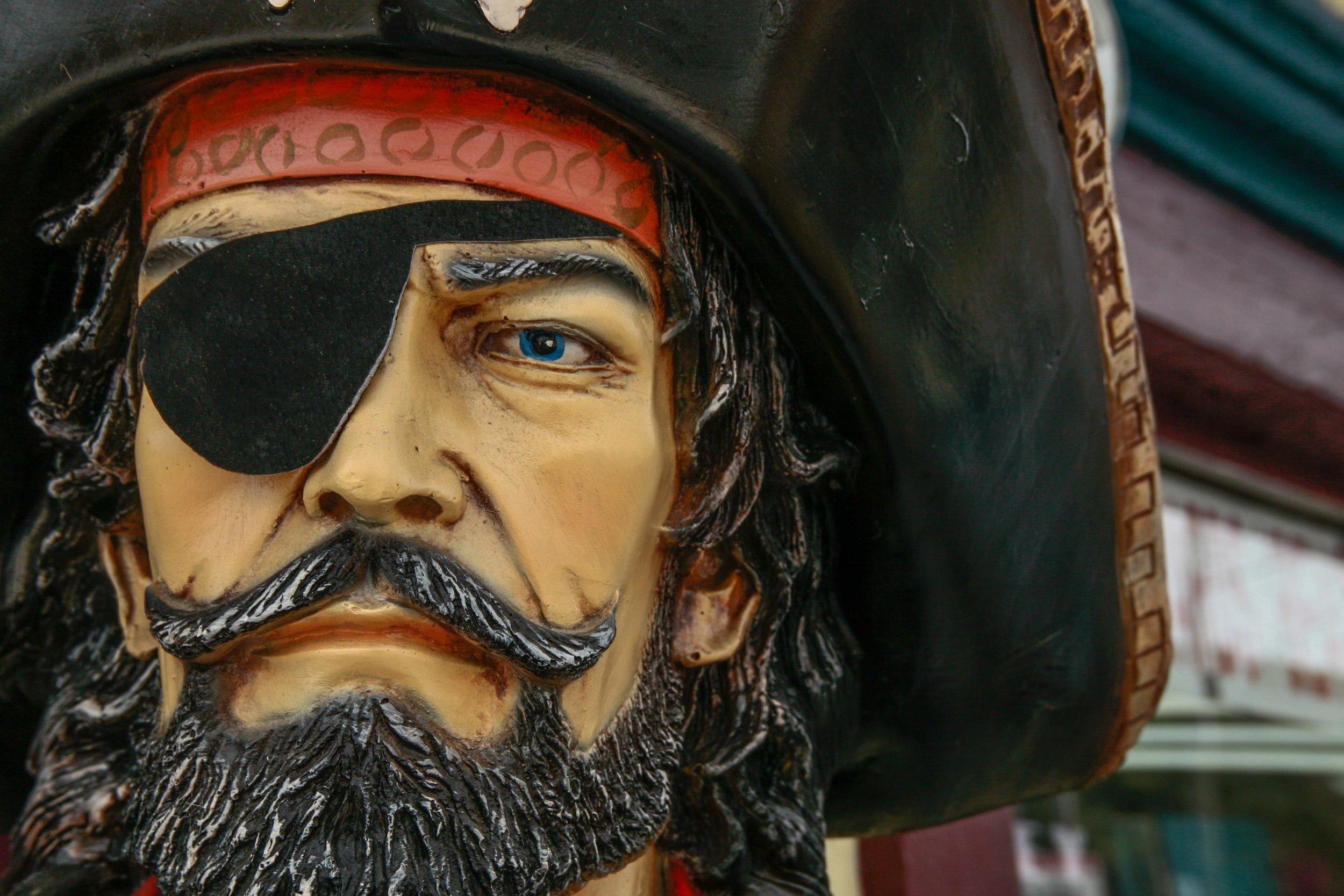25 Cool Facts about Pirates, Flags, and Buried Treasure
1. The accent that people most associate with pirates comes not from pirates, but from Disney’s Treasure Island (1950) movie.
2. Many pirates wore eyepatches, but not because they were missing an eye. It was to make the transition easier from a bright ship deck, to the dark halls of the lower deck. One eye would always be ready for the darkness.
3. In addition to wooden legs and hooks, ordinary pirate crew would receive monetary compensation if they lost a limb in battle.
4. Pirates wore lots of earrings because they mistakenly believed it would prevent seasickness.
5. Most people didn’t retire of old age if they were pirates. They either died young, or accumulated enough loot to retire.
6. Most historians agree that the “Golden Age of Piracy” was between 1650 and 1720. This was the age of Blackbeard and Henry Morgan. (Yes *that* Captain Morgan.)
7. Pirates were just as excited to find maps as they were treasure chests with gold and silver. Maps were an extremely rare and valuable commodity. They allowed seafarers to navigate difficult channels and avoid smashing their ships on rocky shoals.
8. Many pirates could read. They’d learn because there wasn’t much else to do on a ship when you weren’t working. Reading was so popular amongst pirate crews that when raiding they would often steal books.
9. Pirates kept live animals on board their ships to provide eggs, milk, and fresh meat. They didn’t have refrigerators so food would spoil easily. Vegetables would be fermented or dehydrated. Once it was discovered that limes prevented scurvy, they would bring along a lot of citrus fruit.
10. Pirate ships were (somewhat) democracies. Captains were elected by popular vote. They could also be removed from power if people weren’t happy with their performance.
11. The “pirate code” wasn’t an official thing. It varied from ship to ship and would be refined by the captain.
12. Merchant sailors were treated so poorly by their captains and ship owners, that when a merchant ship was captured, the sailors would often join the pirate crew. Better pay, better conditions. What’s to lose?
13. Pirate ships would have their own bands and makeshift orchestra. They also had their own theater groups. This is because life at sea was super boring.
14. Parrots were kept as pets on pirate ships because they could be sold for a lot of money if the ship made it back to Europe or Asia from the Caribbean.
15. Almost every single pirate ship had a unique flag. It was rarely a skull and crossbones. For example, Black Bart’s flag was an image of himself next to the Devil holding an hourglass.
16. While pirate captains had their own room with a bed, pirate crew would sleep in hammocks, usually all together in a giant room. Hammocks were preferred since they were lighter and swayed better with the rocking of the ship. Beds were comfier though.
17. While piracy was bad for the ship or town that got plundered, it was great for the port that the pirate ship docked at next. Crews would be so thrilled to have so much money they’d spend it all and stimulate the local economy.
18. Privateering was essentially legalized piracy. A King or Queen would give a pirate captain a “letter of marque” which was a document that authorized and made legal the pirate’s activities. Usually a ruler would only authorize this type of activity against an enemy state. France vs England for example. Each side would call the other a pirate, but they were both technically privateers.
19. Many pirate captains were respected members of their communities. Captain Kidd even helped build and pay for a church.
20. Crew members that broke the rules (or were just too annoying to deal with) were often marooned on a deserted island. They were given a pistol with a single shot so they could end their lives quickly instead of dying of dehydration.
21. Julius Caesar was once kidnapped by pirates. When they set his ransom at a low amount, he laughed at them and told him he was worth at least 2.5x more. While held captive he would write speeches and practice them in front of the pirates.
22. The largest pirate score was (inflation adjusted) $200 million in gold, silver, jewels, maps, and ivory. The plunder was so large that it damaged political relations between England and India. Captain Henry Avery quickly became one of the most wanted men on Earth. He vanished without a trace, and was rumored to have retired to a tropical island.
23. Captain Black Sam Bellamy was known as the Robin Hood of the Sea. Fed up with the greed of English rulers and their treatment of the poor, he established a pirate ship and began raiding rich merchants. He would then give the plunder to the poor.
24. One of the most powerful pirates in history was a woman. Madame Ching Shih commanded the Red Flag Fleet, an armada of 300 ships and 40,000 men. After retirement, she opened a casino and operated it until she died at 69. Which was pretty lucky since the average lifespan of a pirate was 26 years.
25. Pirates still exist today. They can be found mostly off the coast of Nigeria and Somalia. They’ll hijack oil tankers and container ships. Then the pirates will ransom the vessels back to the ship owner.














